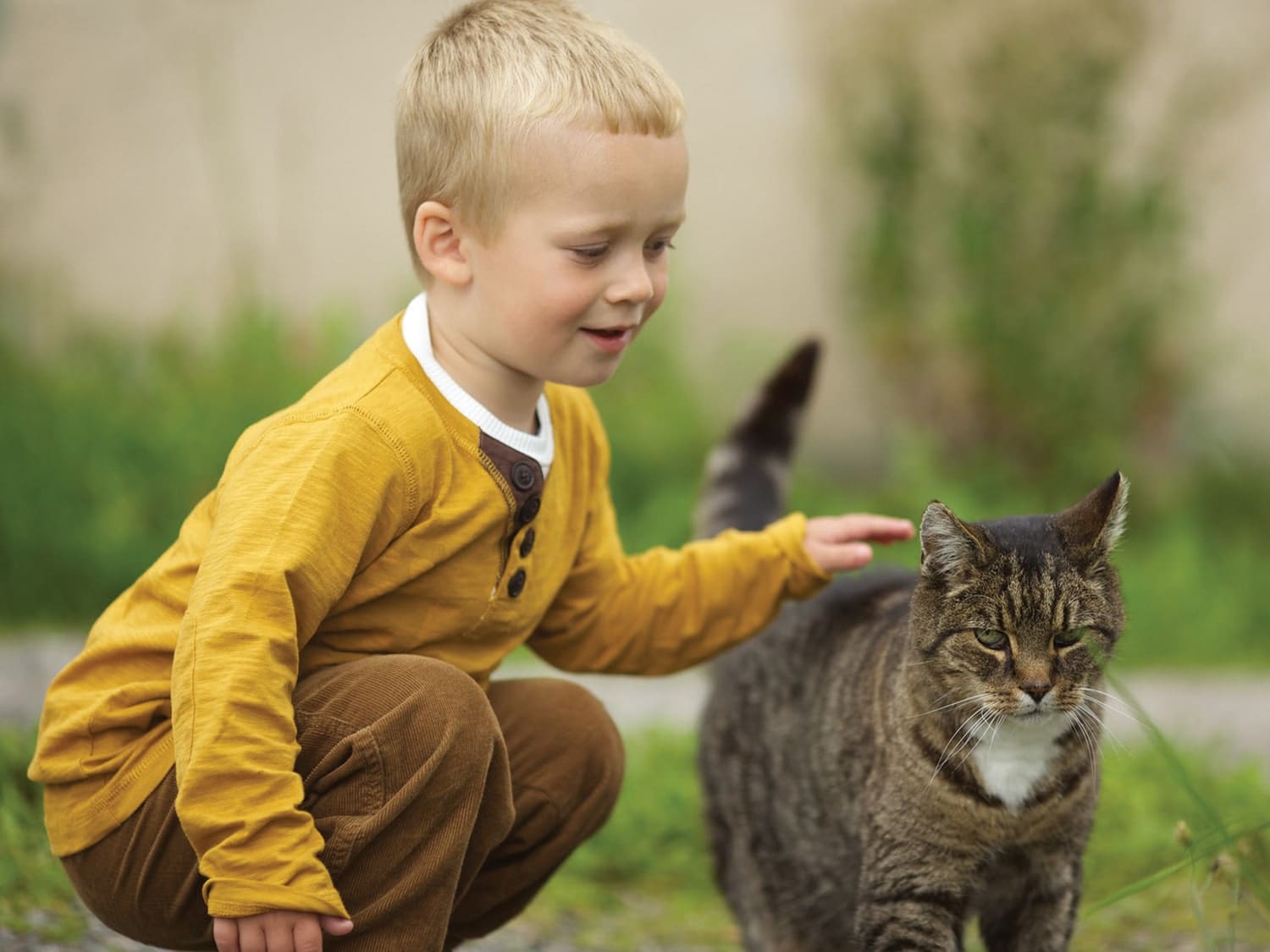Children and pets: The do's and don'ts to help kids and pets bond

Spending time with a pet can be a valuable experience for a child. My 7-year-old daughter, Reagan, has been around dogs her entire life.
From the moment she came home from the hospital, our two Pugs, Willie and Bruce, were there to greet her, and they have shared all of her firsts: first tooth, first steps, first word, first day of school. Reagan has always seen the dogs as her brothers and her best friends - in fact, she barked before she talked! There are a number of ways in which a dog or cat can be good for a child. Pets give kids a way to practice their social skills at the same time that they encourage much-needed physical activity. The strong bond between a child and an animal assists in development of important life skills and personality traits, including responsibility and empathy. Kids and pets may be a natural match, but that doesn’t mean your toddler and your cat should be left to their own devices. To help ensure safe, happy interactions between pets and kids, follow these five do's and don’ts. Do actively supervise interactions Young children should never be left alone with pets. Supervision is about much more than merely being physically present in the same room - effective supervision involves being actively involved in any interactions your child has with your pets. This includes monitoring body language - the child’s and the pet’s - to ensure interactions remain stress free for everyone. It is also crucial that you take the time to teach your child how to properly - and gently - touch and handle your pet. Be prepared to respond to a potential problem by intervening when necessary: A dog who steals a child’s toy can be told to “leave it” or “drop it” and redirected to his own toys, or a child can be asked to stop petting a cat who is swishing his tail and expressing some level of anxiety. Successful supervision means being fully engaged and gently guiding both child and pet to help keep the interaction as safe and positive as possible. Don’t ask a child to discipline a pet Even the best-behaved pets may act naughty sometimes. If your child catches your cat lounging on an off-limits counter or spots your dog stealing snacks from the kitchen table, she should immediately tell you, rather than handle it on her own. Adult intervention is a simple way to help avoid a scenario where the child gets bitten or scratched. It’s important to remember that children emulate the attitude and tactics that adults use when dealing with pets. For this reason, behaviour interventions should be force free and reward based. Do provide safe spaces and private time Getaway spaces and time apart can help both your child and your pet reset when necessary. Train your pet to escape to a “home base” - a crate, bed or perch - when he’s feeling overwhelmed or in need of a break. Make sure your child understands that when the pet is in his getaway space, he is not to be approached, interacted with or petted. It’s also important to provide a space for your child to be alone if she chooses. A closed door or gated area allows her to play, rest or eat undisturbed. If your child is too young to be alone in a room with a closed door, consider designating a safe room for your pet instead, somewhere he can be safely left unsupervised when your child needs some private time, or even just time alone with you. Don’t let stress escalate Adults need to be aware of a pet’s body language during interactions with children and should be prepared to intervene if a pet starts to act nervous or anxious. It is also important to teach your child that your pet uses his body - ears, tail, face - to express his emotions, and that these communications should be respected. Ignoring early warning signs can lead to a scratch or bite for an unsuspecting child. Regardless of how tolerant your cat or dog is, it is dangerous to force a pet to tolerate a stressful interaction. Keep in mind that whatever your child is allowed to do with her own dog or cat serves as her guide for how to act around other animals, many of whom may not be nearly as tolerant. So while your dog may let your toddler pull on his ears, your neighbour’s dog may snap at her for the same behaviour. Supervise interactions between your child and any animal carefully, and be ready to step in if the pet seems uncomfortable or anxious. Do reinforce positive interactions Teaching your child and your pet to interact calmly and safely with each other can be rewarding for everyone in your family, humans and animals alike. Structuring common interactions, such as greetings, petting and play, provides a routine for both your pet and your child. Rewarding these positive interactions encourages both your pet and your child to make good choices. Rewards also help teach your pet to associate your child with good things happening. Rewards can also reinforce your child’s behaviour toward your pet. Praise her for making good choices, like leaving a sleeping or eating pet alone, calmly inviting a pet to approach her at his own pace, or using gentle hands to touch a pet. Rewards reinforce good behaviour in your pet and your child, and can help to ensure that the two of them will form a lasting bond.





